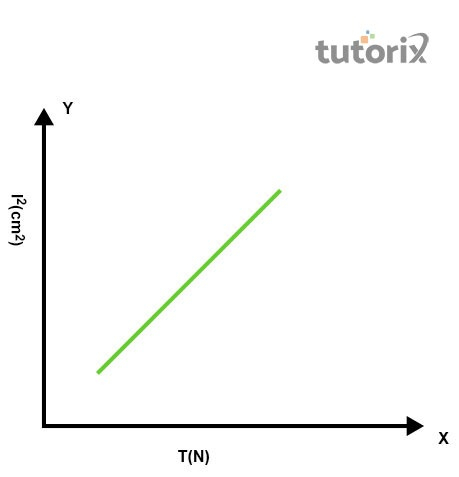

In the experiment for studying the relationship that exists between length and the tension with respect to the frequency of the sound wave, the device of sonometer is important. It is a device that follows the Law of tension, where it is directly proportional to the frequency associated with the given string. This device is a hollow rectangular box made out of wood and has a length of more than 1 meter. To the end of the sonometer, there lies a hook and on the other side, it has a pulley. This experiment is conducted to verify the Law of tension with the help of the device sonometer.
The aim of this experiment is to show whether the Law of tension is truly exhibited by the sonometer or not and the relationship that lies between tension and length for the given wire having constant frequencies. However, in conducting this experiment, several materials are required that include the followings, device of sonometer, screw gauge, rubber pad, paper rider, slotted weights of 7 and 1/2 kg, meter scale, hanger 1/2 kg and lastly, a set for 8 tuning forks (Chauhan et al. 2021). This experiment will not only prove the Law of tension but will also help in learning the use of the device sonometer.
The theory that is applied in this experimentation shows a few conditions, suppose the given string is plucked from its centre, which is stretched and fixed by two pints at each end, then there occurs vibration. This vibration seems to move out in the exact opposite direction along with the given string (Chauhan et al. 2021). This occurs due to the generation and travelling of the transverse wave through the string. For example, if the length of the string is l, and it is stretched with a tension (T) and has a mass (m) per unit length, then the frequency of the vibration is expressed as, $\mathrm{F\: = \:1/2l\sqrt{T/m}}$ . In this expression, F is considered as the constant, and in turn, it states that, m and $\mathrm{\sqrt{T/1}}$ is also constant.

Figure 1: Study of the Relation between the Length of Given Wire and Tension for Constant Frequency Using Sonometer
In conducting this experiment, certain steps are to be followed as follows. The first step states the setting of the sonometer on the tabletop, giving it a weight of 4 kg. The hanger used in this experiment needs to have a maximum weight that is suitable for carrying out the experiment. However, for this experiment, a frictionless pulley is used. Need to move the wooden bridges in order to maximize the length of the given wire. Selections of 256 Hz for forks are set, that is to strike against the rubber pad leading to generating vibrations. Wire AB is vibrated by plucking. Following these procedures, record the changes that are noticed at the time of observation.
Observations during this experiment are to be recorded in a tabular format as given below. Need to consider the frequency of the tuning fork F, at constant, which is 256 Hz. Record the tension and the change in length for the given experiment.

Figure 2: Relation between Tension T (N) and Length $\mathrm{l^2 \:(cm^2)}$
In order to calculate, certain things to be considered, one needs to find the length (L) and record the mean length in the column. Identify the $\mathrm{l^2}$ and $\mathrm{l^2/T}$. In the next step, I need to plot T and l2 along the x-axis and y-axis.
| Reading no. | Mass (M) in kg | Tension (T)= Mg in N | $\mathrm{\sqrt{T}}$ | Vibrating length (l) in m | $\mathrm{\sqrt{T/1}}$ |
|---|---|---|---|---|---|
Figure 3: Observation table Variation of resonant length with tension
Certain precautionary measures are to be used, the first is to make use of frictionless pulleys, and the wire needs to be of uniform cross-section. Usage of rubber pad is necessary, for calculations, length can be increased and decreased (Amrita.olabs.edu, 2022). Rigid wire and sharp wooden bridges should not be used. Correct weights should not be used.
In this tutorial, a detailed discussion has been conducted on the experiment that defines the Law of tension. However, this experiment makes use of a sonometer, which is quite important for recoding pf the vibrations that are generated by plucking the middle part of the given string. However, specific procedures are to be maintained with certain precautionary measures, as, if errors lie during the experiment, then readings might not be appropriate.
Q1. What are a sonometer and its usage in daily life?
Ans. Sonometer is a device that is used for defining the intricate relationship that exists between the frequencies for the sound produced by the string at the time of plucking in the experiment. The device sonometer is used for diagnostic purposes, such as to measure density, tension and frequency for vibrations. This device is used in identifying the density of bone and hearing capacity.
Q2. What is the law of tension?
Ans. Law of tension is defined as the prime frequency of vibrations of the respective string that is directly proportional to the square root of tension, when the length of vibration and mass per unit length is considered to be a constant. It is expressed as $\mathrm{v\:\varpropto\:1/l}$, where, l is the length.
Q3. What is defined as the pitch of the sound and what factors affect its pitch?
Ans. Pitch of sound can be defined as the sound sensations that are perceived by the human ear, depending upon the aspects of frequency of vibrations. The factors that are responsible for affecting the pitch of sound includes, tension (T), mass per unit length and lastly, length (L).